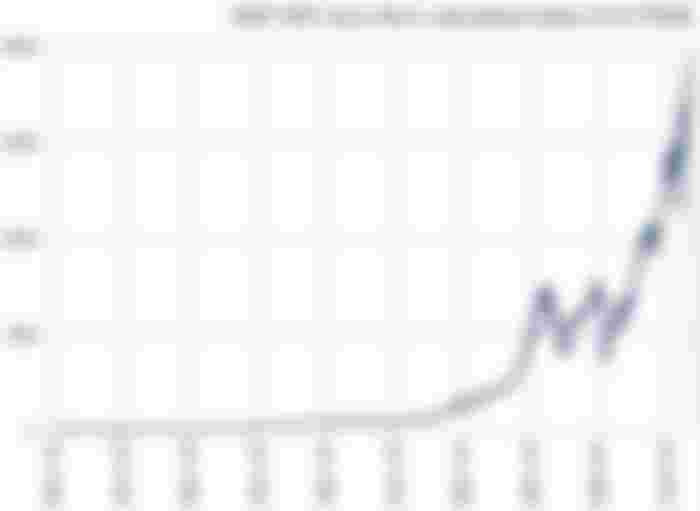The S&P 500 is a U.S. stock market index that tracks the performance of the 500 largest U.S.- capitalized companies. Investors infer form this the overall performance of the market.
On news portals or TV news, you can often hear how a market index has performed on that day. You must have come across terms like FTSE100, Dow Jones, DAX or S&P 500.
The previously mentioned indices, for example, show the performance of a national of a national economy. The question is at what point in time. Economic psychology is also present here. Most of these insides do not show the current state, but what investors think about what will happen in the future. If the outlook is positive, the index will also rise, despite the fact that the economy is currently in ruins.
History
Standard & Poor's, which sponsors a number of other market indexes, traces its roots to an investment information service begun in 1860 by Henry Barnum Poor. In 1941 Poor's original company, Poor's Piblishing, merged with Standard Statistics and assumed the name Standard and Poor's Corporation, a provider of financial information and analysis. The S&P 500 index, formally called the Composite Index had been launched on a small scale in 1923.

It began tracking 90 stocks in 1926 and expanded to 500 in 1957. The S&P 500 was introduced by Standard & Poor's in 1957 as a market index to track the value of 500 large companies listed on the New York Stock Exchange and the NASDAQ Composite.
How does the S&P 500 work?
The S&P 500 tracks the market capitalization of companies in its index. Put simply, we call it the S&P 500 because the index includes the 500 largest companies in the U.S. market. We can examine the size of firms in several ways, such as stock of assets, sales, or-as in this case- capitalization . In this case, we look at how many shares the company has and multiply them by the stock price quoted on the current stock exchange. This shows what the market thinks about how much the company is worth. Once it has all 500, it is weighted according to the size of the capitalization. The performance of a company of 100 billion cannot be given the same weight as that of a company of 10 billion. Therefore, ten times they will given weight. Finally, it is divided by a permanent divider so that we do not get a number of billions. Yet only a four-digit number is more transparent.
it is not always enough to be the biggest, as there are other aspects to be examined for which there is a committee . This committee selects companies based on their liquidity , size, and industry . The index is re-weighted quarterly in March, June, September and December. In order for a company to be included in the index, several criteria must be met, for example:
must be based in the United States
Market capitalization must be greater than or equal to 11.3 billion dollar
annual dollar value traded to float-adjusted market capitalization is greater than 1.0
minimum monthly trading volume of 250,000 shares in each of the six months leading up to the evoluation date
at least 50 % of the company's stock must be available to the public
at least 50% of the assets and income invested must be in the United States
there must be a positive profit for at least four consecutive quarters
In addition , only those that are listed on a large stock exchange can be entered. For example on New York Stock exchange, the Nasdaq or BATS Global Markets.
How can we buy S&P 500?
The S&P 500 index can also be traded on a futures market, in CFD format or as an ETF ticket. CFDs are mostly used for short-term, intraday trading and most often with leverage. The ETF is more exciting.
S&P 500 ETFs are perfect for building a well-diversified portfolio. The 500 companies in the index operate in different sectors most of them produce for the global market. Thus, for lazy investors, there is no better solution than buying such an ETF.
One of the best known S&P 500 ETFs is a fund available on the US stock exchange called SPY.
SPY is one of the largest and most heavily-traded ETFs in the world, offering exposure to one of the most well known equity benchmarks. While SPY certainly may have appeal to investors seeking to build a long-term portfolio and include large cup U.S. stocks, this fund has become extremely popular with more active traders as a way to toggle between risky and safe assets.
The value of S&P 500 was only 100 in 1957, now it is 4229 right now.
